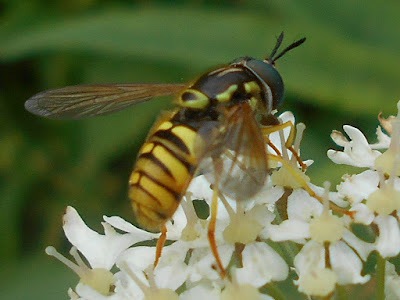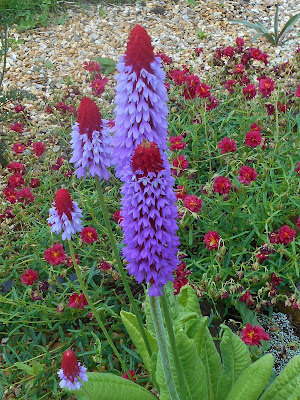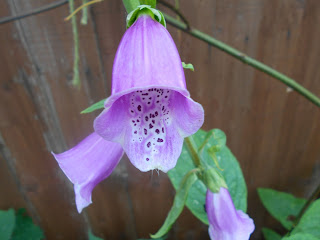Kilsby is one of those villages through which thousands of people pass each day. It is situated on - or just off - a busy crossroads where the Watling Street (A5) crosses the A361. Lorries thunder through on their way to DIRFT (the Daventry International Rail Freight Terminal) and cars hurry through, their occupants on a variety of missions. Few people pause to look around the village and this is a pity.
Chris called in to visit a friend who has recently moved into the village and I grabbed the chance for a quick look around. I would have stayed longer but this was not the occasion to do so.
I headed for St Faith Church. So often 'God's Little Acre' is a haven for wildlife that has been hounded out from elsewhere and a churchyard visit is thus usually time well spent.
The church is approached by a driveway bordered in part by mud (cob) walls. These are getting to be quite scarce and are jealously preserved.
 |
Mud walls near St Faith's Church, Kilsby, Northants.
30 June, 2016
|
Nearby a plant of Dwarf Mallow, Malva neglecta, was growing on disturbed soil. Its leaves were heavily mined by the larvae of Liriomyza strigata, a common but not often recorded agromyzid fly.
 |
The radial pattern of Liriomyza strigata mines on
Dwarf Mallow. Kilsby, Northants. 30 June, 2016 |
The church itself is an interesting structure with a Grade II listing, built using local Jurassic stone in rubble form, by which I mean the stone was prepared by being hammered into roughly shaped blocks rather than being neatly dressed.
 |
St Faith Church, Kilsby, Northants.
30 June, 2016
|
The churchyard wasn't too carefully tended so there was room for some wild flowers to survive and I was pleased to see that on one of these a specimen of the hoverfly Merodon equestris was loafing.
 |
Narcissus Bulb Fly in the grounds of St Faith Church, Kilsby.
30 June, 2016
|
This is an obvious bee-mimic, sometimes referred to as the Narcissus Bulb Fly as the larvae will burrow into narcissus bulbs, causing considerable damage. In fact this handsome fly was probably introduced into Britain sometime in the 19th century in a consignment of narcissus bulbs. The specific name 'equestris' refers, of course, to horses, but I have been unable to establish what, if anything, is the significance of the name.
Perhaps someone out there knows.
Perhaps someone out there knows.
.














































